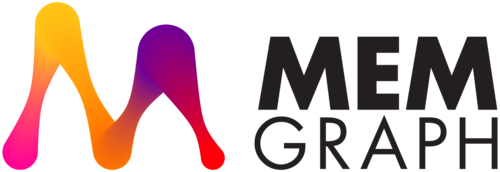Graph Databases
Graph stores can generally be classified into three main types: property graphs, triple stores, and hybrid (or exotic) systems. Each of these has its unique advantages and limitations, with the best option depending on your business goals and the specific outcomes you’re aiming to achieve. Another way to categorize graph stores is by their feature set, which can range from basic to enterprise-level. Unlike relational databases, graph stores exhibit a much broader spectrum of quality, particularly when it comes to features like encryption, clustering, and high availability, which are not uniformly available across all systems. Triple stores, in particular, tend to lean more towards academic use rather than enterprise applications, and this difference is often reflected in both pricing models and licensing terms.
Choosing the right graph database solution for your project can be a daunting task due to the sheer diversity and lack of coherence across available options. Over the years, we’ve navigated this complex landscape many times, gaining valuable insights along the way. If you need expert guidance in making this decision, we are here to help. Our team has hands-on experience working with and developing on a wide range of graph databases, both open-source and commercial. We are proficient in various query languages, including SPARQL, Cypher, Gremlin, and proprietary languages like TigerGraph’s GSQL. Each of these query languages offers distinct strengths and is suited for different use cases. We always strive to adopt the technology and API that aligns best with your business objectives. Additionally, while we work across diverse systems, we maintain special partnerships with Neo4j, Memgraph and Amazon Neptune allowing us to offer complementary technology solutions and services tailored to your needs.
Our Services

Our Neo4j consulting services are designed to help businesses harness the full power of graph technology to solve complex data challenges. As one of the pioneers in graph databases, Neo4j has become a leading platform for organizations looking to model and analyze relationships in their data. We have used (and also worked for) Neo4j in the past twenty years. In this span we developed a deep expertise, guiding clients through the entire lifecycle of graph-based solutions. From initial architecture design and data modeling to advanced graph algorithms and performance optimization, our team ensures that each project maximizes the potential of Neo4j.
Throughout our two decades of experience, we have successfully applied Neo4j to a wide range of industries and use cases. From fraud detection and recommendation engines to supply chain management and network optimization, we’ve leveraged the platform’s ability to manage connected data at scale. Our projects have spanned diverse sectors such as finance, healthcare, telecommunications, and e-commerce, where Neo4j’s property graph model has allowed us to deliver intuitive, high-performance solutions. Whether it’s building custom applications, integrating Neo4j into existing systems, or enabling complex queries through Cypher, we have the hands-on knowledge to tailor solutions to specific business needs: custom procedures, APOC analytics, NeoDash customization, graph data science via GDS and more.
As long-standing experts in Neo4j, we stay ahead of the latest developments in the platform, ensuring our clients benefit from the most current features and capabilities. Our services cover not only the technical aspects of Neo4j but also strategic consulting, helping organizations identify the right graph use cases and demonstrating how Neo4j can drive better business outcomes. Our long-term experience with the platform, combined with our deep understanding of various graph use cases, positions us as a trusted partner in transforming data into valuable insights.

Our Amazon Neptune consulting services are designed to help businesses unlock the full potential of graph technology, especially in building scalable, high-performance knowledge graphs. As a fully-managed graph database service, Amazon Neptune supports both RDF (Resource Description Framework) and property graphs, making it an ideal platform for organizations looking to explore complex relationships in their data. We offer end-to-end consulting, from designing and deploying graph-based solutions to optimizing performance and managing data integrations.
A core strength of Amazon Neptune lies in its support for RDF, a key enabler of knowledge graphs. RDF allows for the flexible modeling of data relationships, enabling the creation of rich, interconnected datasets that form the foundation of knowledge graphs. This structure supports the linking of diverse data sources, improving data discoverability, and driving intelligent applications. By leveraging our deep understanding of RDF, we help businesses design and implement knowledge graphs that organize and contextualize data, making it easier to derive insights and make informed decisions. Whether it’s for enhancing search capabilities, improving recommendation systems, or developing advanced AI models, we ensure our clients can fully harness the power of RDF in their Neptune environments.
Additionally, Amazon Neptune’s ability to integrate with machine learning and AI makes it an essential platform for powering graph-based AI applications. RDF-powered knowledge graphs provide the structured data needed for advanced AI models to learn and reason, supporting more intelligent and context-aware systems. Our consulting services not only focus on building robust knowledge graphs but also on enabling the use of graph AI for applications such as predictive analytics, natural language processing, and automated reasoning. By combining our expertise in Neptune, RDF, and AI, we deliver cutting-edge solutions that help businesses stay ahead in an increasingly data-driven world.

Memgraph is amazing and we love the platform. We use this graph DB for high-performance graph analytics, streaming graphs and logistic solutions. Memgraph, known for its in-memory architecture, offers unparalleled speed and scalability, making it ideal for applications that require instant insights from connected data. We provide comprehensive support, from initial data modeling and architecture design to the deployment and optimization of graph-based applications. Our team ensures that each Memgraph solution is tailored to the specific needs of your business, enabling you to take full advantage of its powerful querying capabilities and lightning-fast analytics.
We specialize in integrating Memgraph into your existing data ecosystem, ensuring seamless data flows and leveraging its innovative features for maximum business impact. Whether you’re building real-time recommendation systems, dynamic fraud detection solutions, or optimizing network performance, we guide you through every stage of the process. Our consulting services cover not just the technical implementation but also strategic planning, helping you identify the right use cases for Memgraph and ensuring your solution scales as your data grows.

